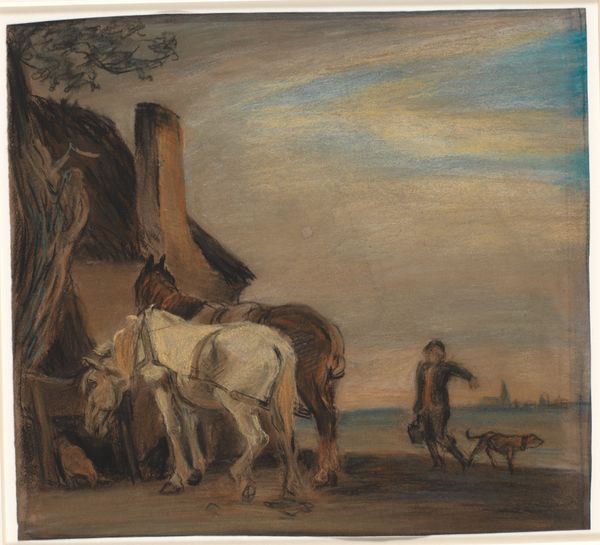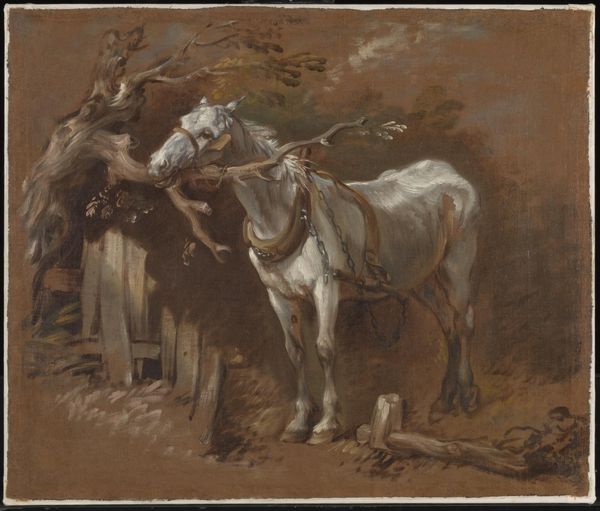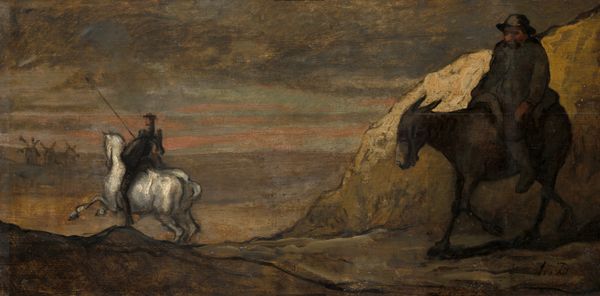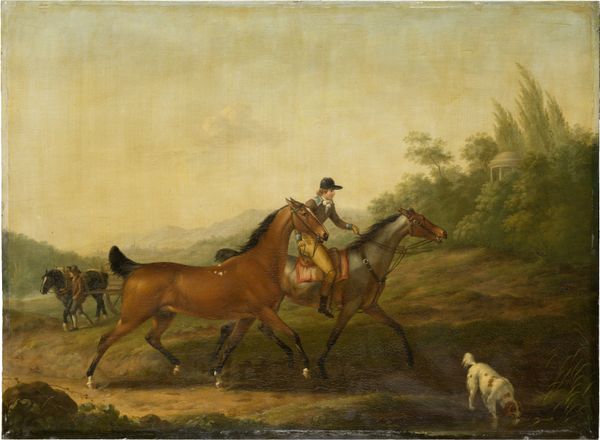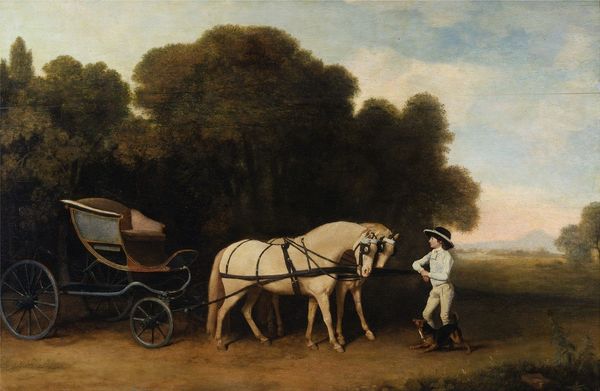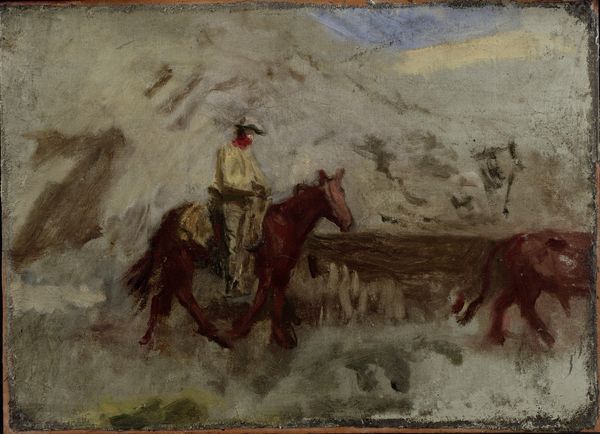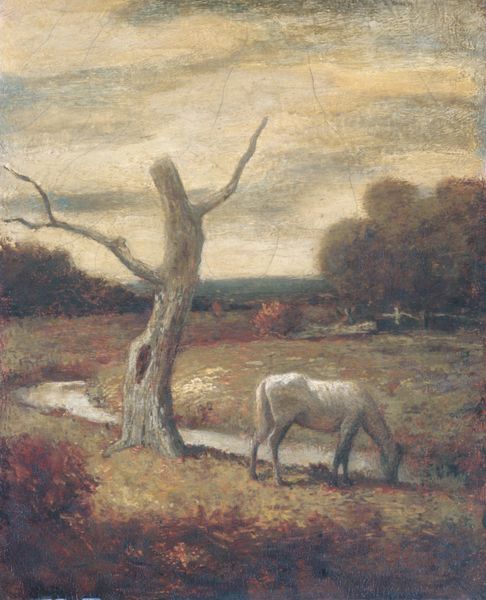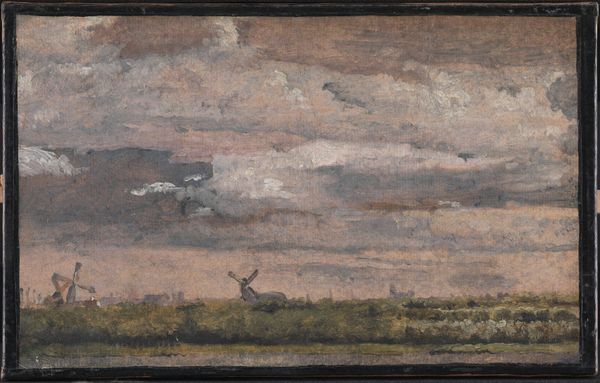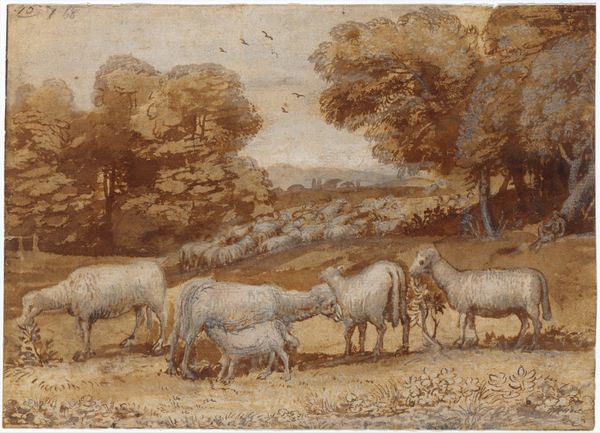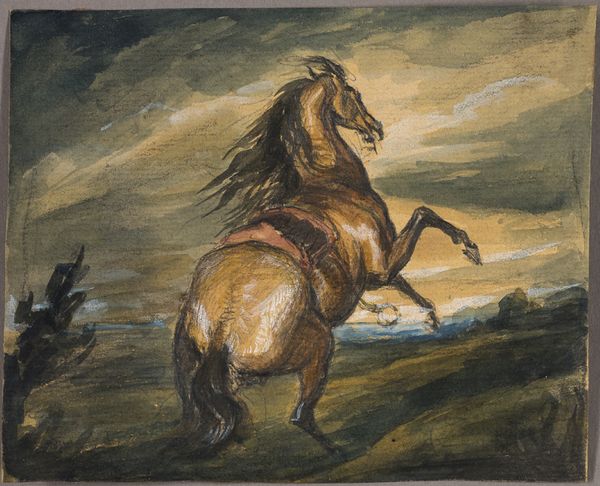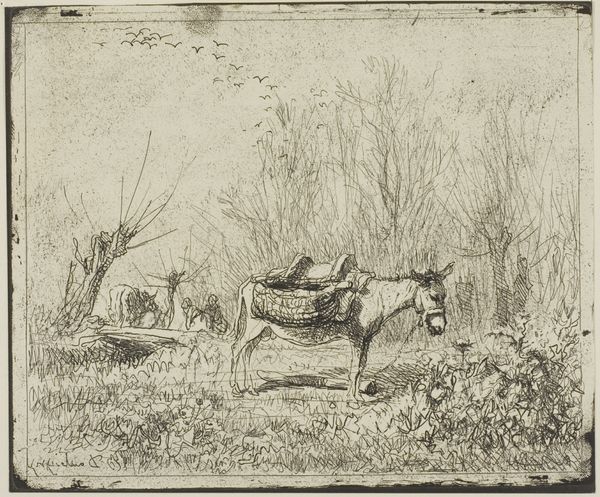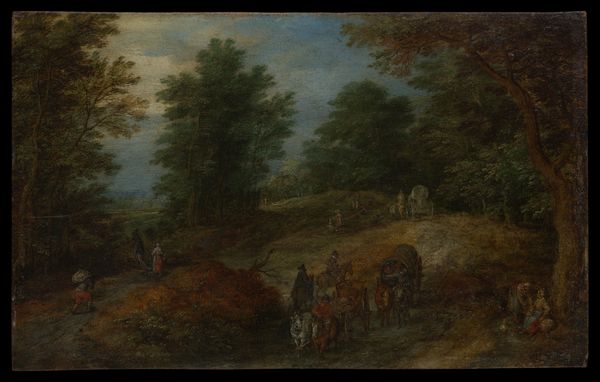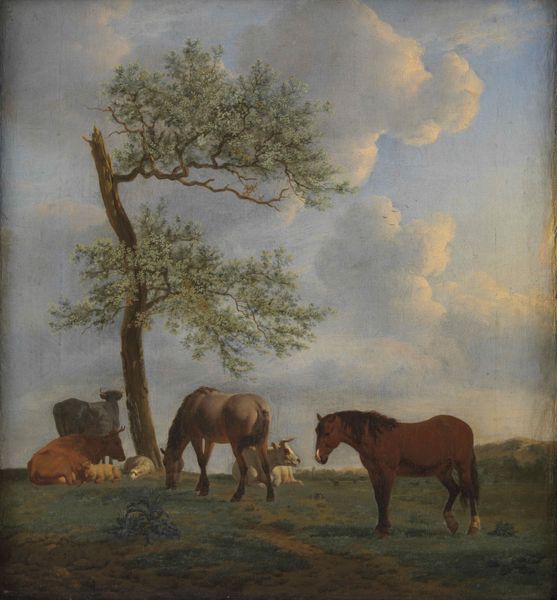
Dimensions: overall: 48.3 x 57.2 cm (19 x 22 1/2 in.) framed: 64.8 x 72.7 x 7 cm (25 1/2 x 28 5/8 x 2 3/4 in.)
Copyright: National Gallery of Art: CC0 1.0
Curator: Albert Pinkham Ryder created this oil painting, “Mending the Harness,” sometime in the mid to late 1870s. Editor: There’s a quiet melancholy to it, isn't there? The muted tones and almost obscured figure of the farmer really contribute to the contemplative mood. Curator: Ryder’s method involved layering oil paint, often thickly, and then varnishing to achieve that depth. It looks like the material application enhances the narrative of manual labor—a harness, an integral component for agriculture in Ryder’s time, now requiring maintenance. Editor: The composition definitely draws the eye into the scene. That hazy background and the rather ambiguous forms almost melt together. You have the animal power next to the figure’s labor—they share the task. Ryder also uses these somber browns and golds to create a tonal harmony that feels almost dreamlike. Curator: Precisely. This was a period marked by the rise of industrialization, and artworks like this one, focusing on the quiet moments in agrarian life, underscore the contrast. It almost elevates a mundane activity into something symbolic. Editor: Perhaps symbolic of the resilience of rural life? The worker, obscured and merged with the earth-tones, becomes anonymous yet connected to an almost primal labor? The mending action itself suggests both breakage and repair—simultaneously decline and continuity. Curator: Well, you could even analyze how the making and consuming of the art mirrors agrarian practices. Pigments grounded, pressed, traded - layered to create new contexts much like harvest turns into nourishment. These actions are parallel! Editor: That's an interesting point. To pull back to form and symbolism, there is so much depth there, really a meditative commentary about our reliance on each other and on these natural forms of support. Curator: Indeed. By studying his painting, one gains insight into a certain respect for agrarian industry. Editor: And from looking closer at its visual properties, we can truly consider a relationship with that time and with our own humanity.
Comments
No comments
Be the first to comment and join the conversation on the ultimate creative platform.
